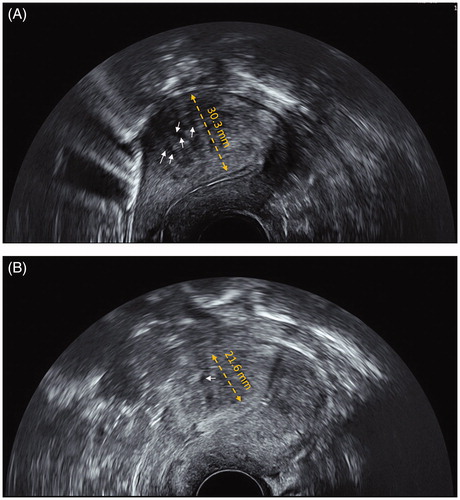Figures & data
Table 1. Baseline characteristics of AD patients.
Figure 1. Two-dimensional transvaginal ultrasonography imaging of uterus by GE Voluson E8 color flow ultrasound machine. (A) Before HIFU treatment, the muscular layer of the anterior wall of the uterus was significantly thickened (30.3 mm, yellow bipolar arrow); with multiple hyperechoic striations and tiny myometrial cysts (white arrows) in the interior. Endometrium was asymmetric. (B) Three months after HIFU treatment, the muscular layer of the anterior wall of the uterus was significantly thinned (21.6 mm, yellow bipolar arrow); with few hyperechoic striations and tiny myometrial cysts (white arrow) in the interior. Endometrium was symmetric.

Table 2. Uterine and AD lesions volumes of patients before HIFU and after treatment.
Table 3. Dysmenorrhea score and menstrual flow analysis.
Table 4. Response rate and recurrence rate after treatment.
